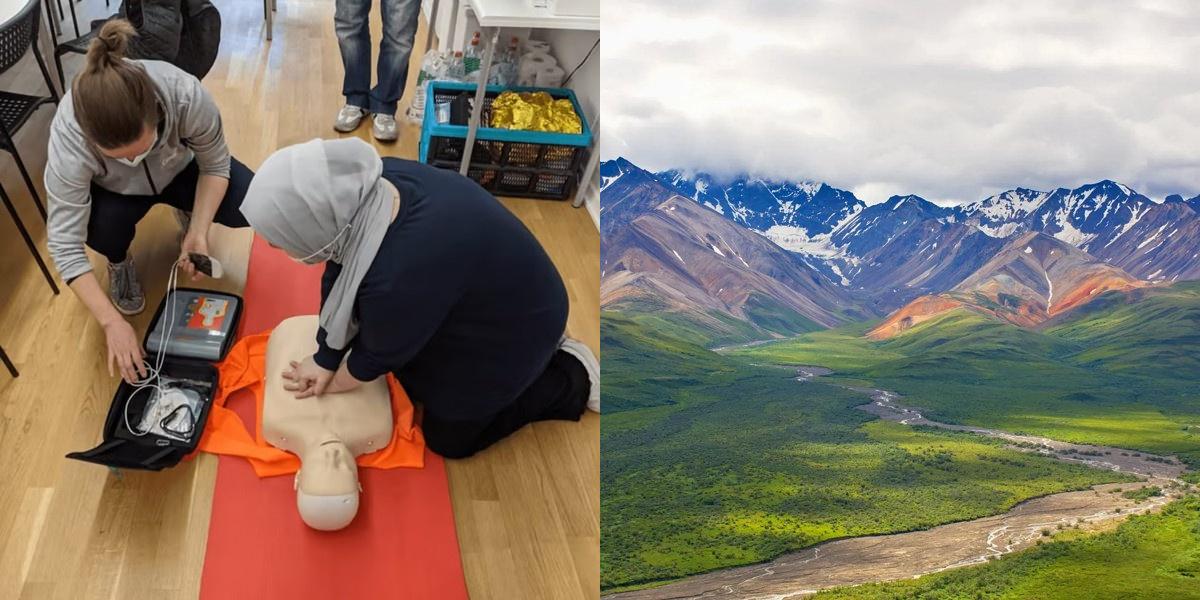What is a Paramedic?
Paramedics are advanced-level emergency medical technicians (EMTs) who have additional training and skills. They are trained to provide immediate medical care to patients in emergency situations. Paramedics are equipped to handle a wide range of medical emergencies, including trauma, cardiac arrest, respiratory distress, and other life-threatening conditions.
Some of the key responsibilities of a paramedic include:
- Assessing patients' conditions and providing appropriate emergency medical treatment
- Administering medications, including intravenous fluids and drugs
- Performing advanced medical procedures, such as intubation and defibrillation
- Collaborating with other healthcare professionals to ensure seamless patient care
- Safely operating and maintaining emergency medical vehicles and equipment
Where do Paramedics Work?
Paramedics work in various settings where emergency medical services are required. These settings include:
- Ambulance Services: Paramedics commonly work for ambulance services, responding to emergency calls and providing immediate medical care in transit to the hospital.
- Hospitals: Some paramedics work in hospital emergency departments, assisting with patient care and providing advanced life support.
- Fire Departments: Many fire departments employ paramedics to provide emergency medical services alongside firefighting duties.
- Search and Rescue Teams: Paramedics may also work as part of search and rescue teams, providing medical care in remote or challenging environments.
How to Become a Paramedic in Alaska?
To become a Paramedic in Alaska, one must first complete an accredited Paramedic training program, which typically takes 1-2 years. After successfully passing the National Registry of Emergency Medical Technicians (NREMT) exam, individuals can apply for state certification. Once certified, Paramedics in Alaska can search for job opportunities to start their career and earn a competitive salary.
Requirements to Become a Paramedic in Alaska
To become a paramedic in Alaska, you must meet certain education and legal requirements. These requirements include:
- High School Diploma or GED: You must have a high school diploma or equivalent to enroll in a paramedic training program.
- EMT-Basic Certification: Before pursuing paramedic training, you must first obtain certification as an EMT-Basic. This certification can be obtained by completing an approved EMT-Basic training program and passing the National Registry of Emergency Medical Technicians (NREMT) exam.
- Paramedic Training Program: Once you are certified as an EMT-Basic, you can enroll in a paramedic training program. These programs are usually offered by community colleges, technical schools, or hospitals and typically take 1-2 years to complete.
- State Certification: After completing the paramedic training program, you must obtain state certification through the Alaska State Office of EMS. This involves passing the NREMT paramedic exam and meeting other state-specific requirements, such as background checks and drug screenings.
How do I get my Paramedic certification?
If you have a strong desire to help others and are interested in a career in the medical field, becoming a paramedic may be a great option for you. Paramedics are highly trained medical professionals who provide emergency medical care to individuals in need. They are often the first responders on the scene of accidents and medical emergencies.
To become a paramedic, you will need to complete a certification program. The requirements for certification may vary depending on the state or country you are in, but here is a general overview of the steps you will need to take:
1. Complete high school or get a GED: You'll need a high school diploma or GED to apply for paramedic training programs. If you don't have one, start by completing a GED program.
2. Get Basic Life Support (BLS) certification: Before starting your paramedic training, you must have a current BLS certification, which you can obtain from organizations like the American Heart Association or the Red Cross.
3. Enroll in a paramedic training program: Find a program at a community college, technical school, or university. These programs usually take 1-2 years and include classroom instruction and hands-on clinical experience.
4. Ensure you meet age requirements: Most paramedic training programs require you to be at least 18 years old. Check the specific requirements of the program you're interested in.
5. Complete your paramedic training: Your training will cover topics such as anatomy, physiology, medical terminology, patient assessment, and emergency procedures. You'll also gain hands-on experience through clinical rotations in hospitals and ambulance services.
6. Pass the NREMT exam: After finishing your training, you must pass the National Registry of Emergency Medical Technicians (NREMT) exam. This includes both written and practical components to test your knowledge and skills.
7. Apply for state licensure: Each state has its own requirements for licensure. Check with your state's EMS office to understand the specific steps you need to take, which may include additional requirements like a background check or drug screening.
8. Maintain your certification: Once you're certified and licensed, you'll need to complete continuing education courses to keep your certification current. This typically involves a certain number of hours of continuing education every few years.
How do I get a job as a Paramedic?
Once you have obtained your paramedic certification and licensure, you are ready to start looking for a job as a paramedic. Here are some steps you can take to increase your chances of finding employment:
1. Update your resume: Highlight your paramedic certification and any relevant experience or skills. Include details about your clinical rotations or internships during your training program.
2. Network with professionals: Reach out to your instructors, classmates, and other professionals in the field. Networking can help you discover job opportunities through personal connections.
3. Apply to local EMS agencies or fire departments: These organizations often hire paramedics to provide emergency medical care in their communities. Check their websites or contact their human resources department for current job openings.
4. Look into private ambulance companies: Private companies also hire paramedics for emergency and non-emergency medical services. Research and apply to private ambulance companies in your area.
5. Prepare for interviews: When you get interview requests, research common interview questions for paramedic positions and practice your responses. Emphasize your skills, experience, and commitment to high-quality patient care.
6. Obtain additional certifications: While not always required, certifications like Advanced Cardiac Life Support (ACLS), Pediatric Advanced Life Support (PALS), and Prehospital Trauma Life Support (PHTLS) can make you a more competitive candidate.
7. Consider volunteering or part-time work: If finding a full-time position is challenging, gain experience and make connections by volunteering or working part-time with local EMS agencies, fire departments, or healthcare organizations.
8. Be flexible with job opportunities: Depending on the demand for paramedics in your area, you may need to consider different types of positions or shifts. Starting with a part-time or per diem position can help you gain experience and get your foot in the door.
Career Paths and Opportunities after Becoming a Paramedic
Becoming a paramedic opens up a variety of career paths and opportunities in the field of emergency medical services. Here are some potential career paths you may consider:
-
Emergency Medical Technician (EMT) Supervisor: As you gain experience as a paramedic, you may have the opportunity to advance into a supervisory role. EMT supervisors oversee a team of EMTs and paramedics, ensuring that they are providing high-quality patient care and adhering to protocols and regulations.
-
Flight Paramedic: Flight paramedics provide emergency medical care to patients who are being transported by helicopter or airplane. This role requires additional training and certification, as well as the ability to work in high-stress and unpredictable situations.
-
Critical Care Paramedic: Critical care paramedics provide advanced life support to critically ill or injured patients. They often work in intensive care units, emergency departments, or on specialized transport teams. This role requires additional training and certification beyond the paramedic level.
-
Emergency Department Technician: Some paramedics choose to work in hospital emergency departments as emergency department technicians. In this role, they assist with patient care, perform basic medical procedures, and help to maintain a safe and efficient environment in the emergency department.
-
EMS Educator: If you have a passion for teaching, you may consider a career as an EMS educator. EMS educators teach paramedic training programs, continuing education courses, and other educational programs for EMS professionals. This role requires strong communication and teaching skills, as well as knowledge of current EMS practices and regulations.
-
Search and Rescue Paramedic: Search and rescue paramedics provide medical care in wilderness or remote settings. They often work with search and rescue teams to locate and rescue individuals who are lost or injured in these environments. This role requires additional training and certification, as well as the ability to work in challenging and unpredictable conditions.
-
Special Operations Paramedic: Special operations paramedics provide medical support in high-risk or specialized situations, such as tactical operations, hazardous materials incidents, or mass casualty events. This role requires additional training and certification, as well as the ability to work effectively in high-stress and dynamic environments.
Frequently Asked Questions






